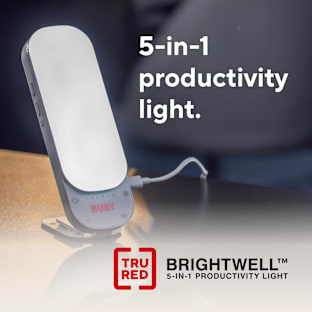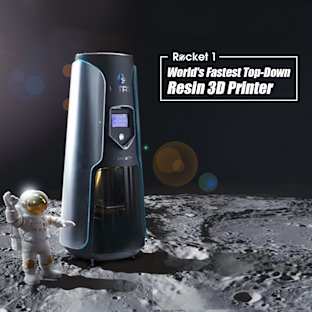Microgrant Winner: Project A
Voting results:
-Project A has 222.6 votes
-Project B has 136.5 votes
-An additional $5,696 has been raised!
Thank you all for making this campaign such a great success!
photo shots:
Here is a photo of over $600 collected through donations at our local grocery store! The support we have gotten from our community has really helped us throughout this campaign.
![Donations]()
Sneak peak of the Autism Awareness Ribbon perk!
![Inline image 1]()
We have been featured in the Ann Arbor news. Please check the article out and share it with people! http://www.annarbor.com/news/education/ann-arbor-high-school-students-raise-money-for-genetic-research-autism-breast-cancer-and-diabetes/
Our Facebook Page: https://www.facebook.com/FindingTheMissingPieceAutismResearchFundraiser
How to vote for one of the two research projects:
- Use the perks: select perks designated to each project.
- Other amount: write a comment about your vote specifying which project it should count for.
- Missed: write a comment at any time.
Consider $10 as one vote. $3 will then be a 0.3 vote. We tally all donated amounts and calculate them as votes for each project.
Who are we?
![The miRcore volunteers at their natural state]()
miRcore is a nonprofit organization dedicated to understanding the genetic causes of diseases. We believe that anyone should be able to initiate research that matters to them. miRcore’s high school volunteers focus on one disease per school year. Our goal is to spread understanding and raise awareness of the disease within the community. In 2012, we voted to study Autism spectrum disorder.
Why do we need autism research?
Autism Spectrum disorder affects not only those who have the disorder but their loved ones as well. Autistic children require special care, and it can be difficult to overcome the communication challenges that the disorder entails. Every autistic child is unique and will respond differently to various situations, which makes it difficult for families to know how to respond to their child’s needs. Autistic people have trouble getting jobs and supporting themselves. Autism costs our country $60 billion each year. Currently, 1 in 88 children is born with autism, the fastest growing developmental disability with a 1148% growth rate. Research must be done to learn how to better diagnose and prevent Autism Spectrum Disorder.
Where does your money go?
With more and more children being diagnosed with Autism each year, scientists and researchers alike recognize the need for a cure. Many of them aspire to end Autism but lack the funding. With your donation, miRcore will be able to help one of these projects chosen by you! Only one project will be funded. We will also give 100% of the money raised to the microgrants, bringing us one step closer to democratizing medical research and understanding autism. Our goal is $10,000 in order to pay for the IndieGoGo fees and to give the researchers everything they requested for.
If you are not comfortable with putting your credit card information on this website, you could also send us a check payable to miRcore, and we will put your contributions in this page.
Can't donate? It's totally okay. Please spread the word to those who may be interested, and share the video with everyone you know!
How the voting works
Whenever you support us, you will have the option to choose the research that you want us to fund. Each perk has two research options--pick the one you would like to support. In the end, whichever research gets the most support will receive all of our funds.
Research A:
This project will see how the brain of an autistic child works during imitation. In the experiment, 20 children with autism and 20 children without autism will be shown a video of actors playing with a toy. Then, the children will be given the same toy, and the autistic kids will be compared to the normal kids on how well they imitate the actress. Their eye movements will be tracked along with their brain activity to see what’s going on in their brain when they imitate others.*
Research B:
The lab has discovered a gene called delta catenin that is involved in autism. Mice that don’t have this gene have difficulty with learning. The researchers hypothesize that the brains of mice with and without catenin will have differences in gene expression. These differences are important in understanding the learning disabilities of mice without catenin.**
Interested in supporting other GIDAS projects? Check out these great IndieGoGo projects:
Making a Dent in diabetes:http://igg.me/at/making-a-dent/x/597112
Breast Cancer Research Microgrant: http://igg.me/at/pioneergidas/x/597112
------------------------------------------------------------------------------------------------
------------------------------------------------------------------------------------------------
* Project A in words of the researcher:
“If the brains of children on the autism spectrum are processing information differently from those of typically developing children, children on the autism spectrum may also be learning different information about the world through imitation. Knowing how children with ASD are processing information when they imitate may allow scientists, clinicians and teachers to understand what children with ASD are learning through imitation, how this is different from typically developing children, and how educational treatments for children with ASD may thus be improved.
“Imitation allows children to gain an understanding of puzzling observations and communicates shared understanding (Uzgiris, 1981); it is also used in transferring cultural knowledge, and learning new behaviors (Whiten, 2009). Imitation is a common means by which learning takes place in early childhood classrooms; the ability to imitate is also a hallmark of success in ASD interventions based on Applied Behavioral Analysis, which are currently considered the most effective educational treatment for individuals with ASD (Winerman, 2004). In this project, I aim to understand whether children with ASD who imitate just as well as typically developing children, show differences in the ways that they process the imitation tasks in their brains. I will present 20 children with ASD and 20 typically developing children with video demonstrations of actresses playing with different toys. After watching these videos, children will get a chance to play with the toys themselves. While children watch the videos and play with the toys, their imitation will be scored based on a rubric (to ensure that imitation behavior is comparable between children with ASD and typical children), their eye movements will be tracked (to understand how they are watching the toy demonstrations) and their brains will be imaged (to see what regions become active when they are watching and when they are imitating).
For brain imaging, I will use a technology called functional Near-InfraRed Spectroscopy (fNIRS), which uses infrared light to track changes in blood oxygen in different parts of the brain; this provides a measure of what brain regions are becoming more activated (consuming more oxygen) during certain tasks. fNIRS imaging is safe and painless (it is done by placing a cap on the head), and it is also being developed in wireless and mobile forms to allow for future brain research in more everyday settings such as classrooms. I will compare the brain patterns of children with ASD and typical children who have similar imitation scores and eye tracking patterns, to determine whether children with ASD process the same imitation tasks differently from typically developing children, at the level of their brain activity.
“Total Budget Amount Requested: $8,000-$9,000.00”
**Project B in words of the researcher:
“Finding a behavioral difference between mice who are wild type and those who are missing a gene by KO technology is intriguing especially in the case of finding learning disabilities in mice lacking a gene involved in autism (delta catenin). This proposal will identify genes important for autism that may not be discovered by other methods.
“Our lab has intensely focused on rare families with autism in the last few years. Through our work we have identified a gene involved in autism called delta catenin (CTNND2). This gene now has evidence for involvement in genetic expression, and work in animal models. We recently have acquired a mouse lacking the delta catenin gene (Israely et al. 2004). These mice show deficits in learning based on testing through the Morris Water Maze (MWM) test. This test examines how fast mice learn to find a hidden platform over multiple attempts. Wild type mice are fully capable of learning and finding the platform at faster rates with each trial they are exposed to, but delta-catenin knock-out mice find the platform at essentially the same rate every trial (they can’t learn). This type of deficit is often attributed to abnormal function of a region of the brain called the hippocampus. We herein propose to test expression in the mouse hippocampus of mice aged 4 months and 15 days in 24 different mice: ½ of the mice will be in a test a group and the other ½ in a control group. Test mice will go through the MWM trial every day for 15 days and control mice will not. After 15 days, RNA will be extracted from the 24 mice and subsequently this RNA will be assessed for quality. This RNA will then be tested on a technology, called a microarray, which looks at gene expression in the sample. Post-running of the arrays we will analyze the data using computational software to examine differences in expression between the test and control mice. Further analysis will examine the differentially expressed genes for enrichment in different biological pathways. Highly differentially expressed genes will be tested and validated by assays measuring RNA and protein levels. Overall, we are highly excited about the potential opportunity to understand the gene expression differences underlying learning ability and disability in the wild type and autistic (Ctnnd2) knock-out mice, respectively.
"Total budget amount: $5,000-$8,000 (less samples can be run for $5,000 but the high quality experiment as is would be ~$8,000)”



















































